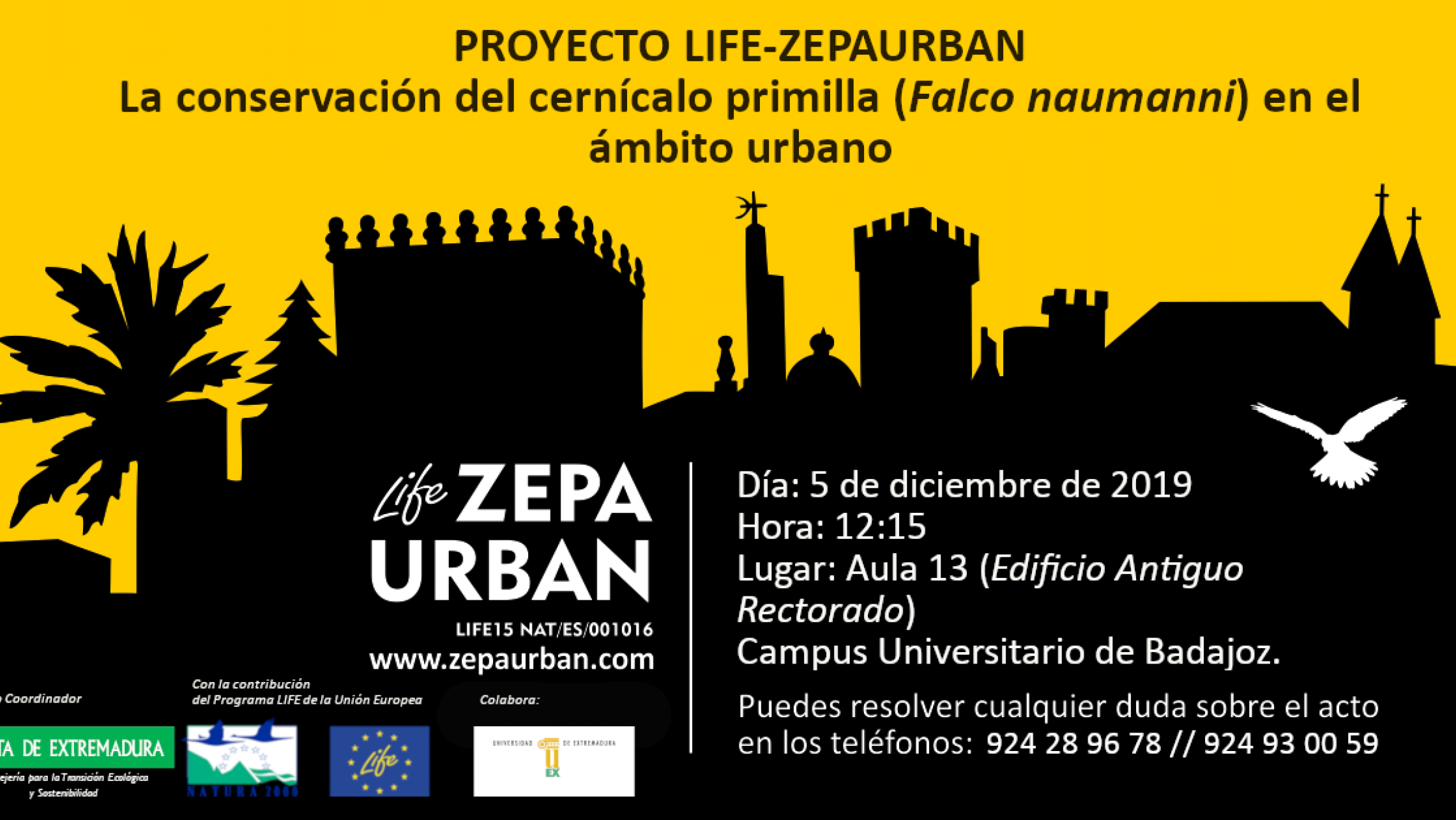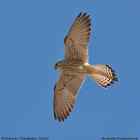Conservation of the lesser kestrel (Falco naumanni) in urban areas
- December 5, 2019
- Time: 12:15
- Classroom 13 (former Rectorate)
- Badajoz Campus, University of Extremadura
The lesser kestrel (Falco naumanni) is a small migrating diurnal bird of prey that occupies regions with a warm climate and with the presence of more or less natural steppes and cultivation areas. It is a species that lives in colonies and which, in breeding season, is associated with urban environments because it installs its nests in different types of buildings. Therefore, it is easy to find this species in buildings in the countryside as well as in buildings inside urban centers.
The lesser kestrel was one of the most abundant birds of prey in Europe, but it suffered a strong population decline throughout the Western Palearctic from the second half of the 20th century onward, which caused its extinction in some countries and strong population declines in others such as Spain. Speaking of Spain, it which currently houses the largest breeding population of this species in the European Union. The data indicates that Extremadura is home to just over 20% of the Iberian population.
The main objective of the LIFE-ZEPAURBAN Project is to develop a management model for Special Protection Areas for Birds (SPAs) established in urban area so as to ensure the conservation of the lesser kestrel over the long term. To this end, the project is working on improving the nesting sites of the species within the urban area, as well as developing a pilot project for the management of their feeding habitat.
In addition, work is being done to raise awareness amongst the local population and, especially, amongst the owners and managers of the buildings about the problems of conservation for the species and to achieve their involvement to solve said problems. Finally, the creation of a sustainable tourist resource based on the observation of the lesser kestrel is being promoted.







